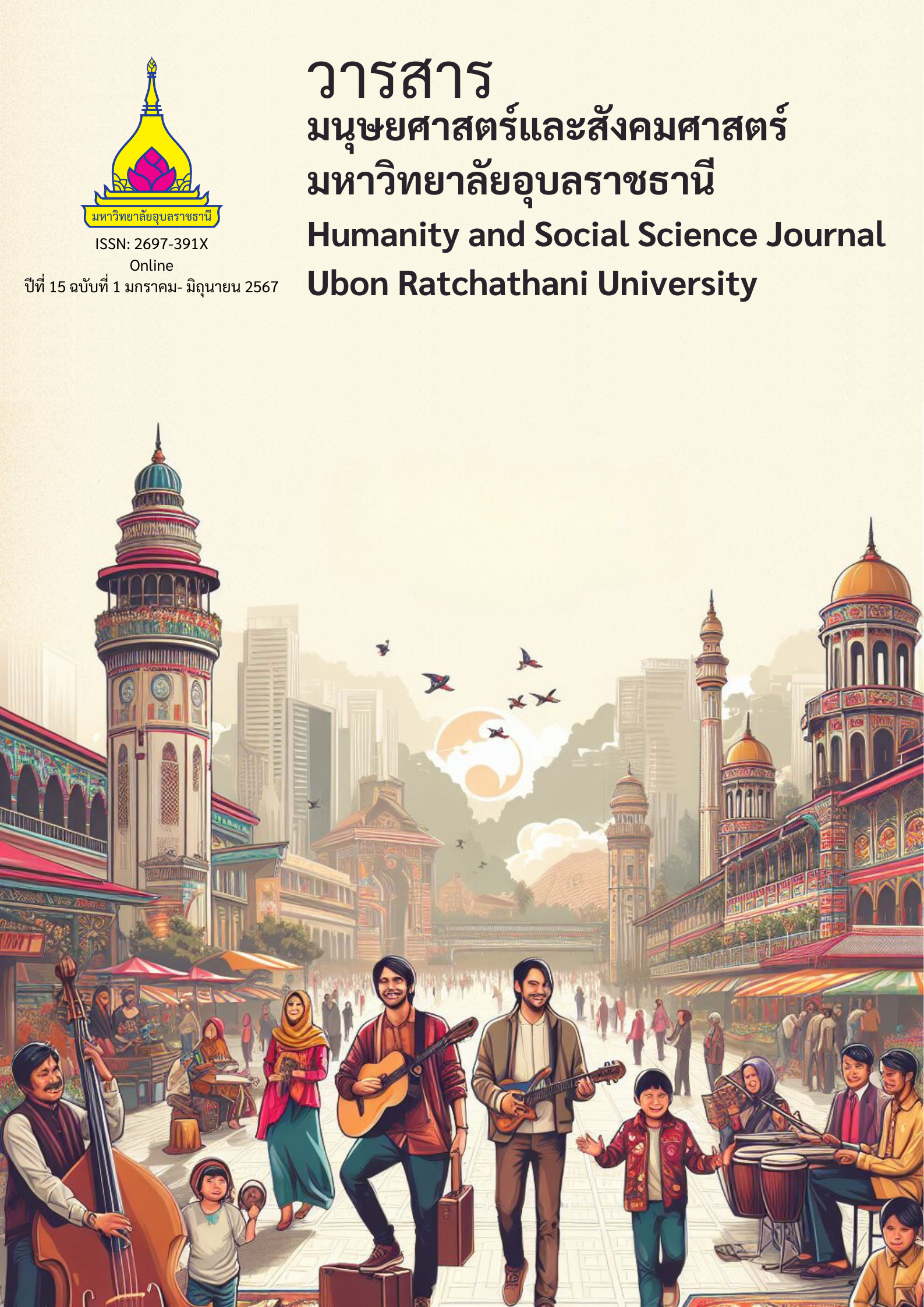ปัจจัยความสำเร็จของการบริหารท้องถิ่น และโครงการนวัตกรรมการสร้างแบรนด์เมืองด้วยธรรมาภิบาล : กรณีศึกษาเทศบาลนครยะลา
Main Article Content
บทคัดย่อ
การศึกษาครั้งนี้มีวัตถุประสงค์ (1) เพื่อศึกษาผลสำเร็จและปัจจัย
แห่งความสำเร็จในการบริหารจัดการที่ดีของเทศบาลนครยะลา (2) เพื่อศึกษาผลสำเร็จและปัจจัยความสำเร็จในโครงการนวัตกรรมสร้างแบรนด์เมืองภายใต้
อัตลักษณ์เมืองยะลา โดยใช้วิธีการวิจัยเชิงคุณภาพ ทั้งการศึกษาข้อมูลจากเอกสารและการสัมภาษณ์เชิงลึกจากกลุ่มผู้บริหารท้องถิ่น เจ้าหน้าที่ท้องถิ่น และตัวแทนภาคประชาสังคม รวม 61 คน มีการใช้แบบสัมภาษณ์สำหรับการสัมภาษณ์เชิงลึกและการสนทนากลุ่มเกี่ยวกับปัจจัยแห่งความสำเร็จ วิเคราะห์และสรุปผลโดยใช้วิธีการวิเคราะห์เนื้อหาและการวิเคราะห์สรุปอุปนัย
ผลการวิจัยพบว่า (1) ความสำเร็จของธรรมาภิบาลของเทศบาลนครยะลาแบ่งออกเป็น 6 ด้าน ได้แก่ ความโปร่งใส การมีส่วนร่วมของประชาชน การลดขั้นตอนการให้บริการประชาชน วินัยทางการคลัง ประสิทธิภาพและความพึงพอใจของประชาชน ด้านปัจจัยความสำเร็จของธรรมาภิบาล ได้แก่ การมีส่วนร่วม
ของประชาชนและพลเมืองที่มีการศึกษาดี ทีมผู้บริหารที่มีประสิทธิภาพ วัฒนธรรมการทำงาน เสถียรภาพทางการเมือง และภาวะผู้นำของนายกเทศมนตรีนครยะลา (2) ความสำเร็จของโครงการ City Branding ได้แก่ 1) นวัตกรรม City Branding นำชีวิตชีวา ชุบชีวิตเมืองด้วยการปรับเปลี่ยนภาพลักษณ์ของยะลา 2) นวัตกรรม
ได้สร้างความโดดเด่นและสื่อสารเอกลักษณ์ของเมืองและสร้างการยอมรับ
ในเชิงบวกให้กับเมือง 3) นวัตกรรมสร้างความเจริญเติบโตทางเศรษฐกิจโดยใช้แนวคิดเศรษฐกิจสร้างสรรค์และการนำทุนท้องถิ่นมาสร้างภาพลักษณ์ ประการสุดท้าย ปัจจัยแห่งความสำเร็จในโครงการ City Branding ได้แก่ การวินิจฉัยปัญหาที่ถูกต้อง ภาวะผู้นำของนายกเทศมนตรี กระบวนการและการดำเนินการที่ชัดเจน วัฒนธรรมประชาธิปไตย การสร้างความเข้าใจและความปรองดองในสังคม
พหุวัฒนธรรม การสร้างความเป็นเจ้าของ และการมีส่วนร่วมของประชาชนและเครือข่าย
Article Details

อนุญาตภายใต้เงื่อนไข Creative Commons Attribution-NonCommercial-NoDerivatives 4.0 International License.
บทความที่ได้รับการตีพิมพ์เป็นลิขสิทธิ์ของวารสารมนุษยศาสตร์และสังคมศาสตร์ มหาวิทยาลัยอุบลราชธานี
ข้อความที่ปรากฏในบทความแต่ละเรื่องในวารสารวิชาการเล่มนี้เป็นความคิดเห็นส่วนตัวของผู้เขียนแต่ละท่านไม่เกี่ยวข้องกับมหาวิทยาลัยอุบลราชธานี และคณาจารย์ท่านอื่นๆในมหาวิทยาลัยฯ แต่อย่างใด ความรับผิดชอบองค์ประกอบทั้งหมดของบทความแต่ละเรื่องเป็นของผู้เขียนแต่ละท่าน หากมีความผิดพลาดใดๆ ผู้เขียนแต่ละท่านจะรับผิดชอบบทความของตนเองแต่ผู้เดียว
เอกสารอ้างอิง
Bartlett, D. & Dibben, P. (2002). Public Sector Innovation and Entrepreneurship: Case Studies from Local Government. Local Government Studies, 28(4), 107-121.
Belloso, J. C. (2011). The City Branding of Barcelona: A Success Story. In: Dinnie, K. (eds) City Branding. Palgrave Macmillan, London.
Bevir, M. & Rhodes, R. A. W. (2003). Interpreting British governance. London: Routledge.
Bevir, M. (2012). Governance: A very short introduction. Oxford, UK: Oxford University Press.
Bowornwathana, B. (1997). Transforming bureaucracies for the 21st century: The new democratic governance paradigm. Public administration quarterly. 21(3), Fall, 294-309.
Castillo-Villar, F. (2018). City branding and the theory of social representation. Bitacora Urbano Territorial. 28. 31-36.
Chantawanich, S. (2011). Qualitative research methods. Bangkok: Chulalongkorn University Book Center. (in Thai)
Denhardt, R. & Denhardt, J. (2000). “The New Public Service: Serving Rather than Steering.” Public Administration Review. 60 (6): 549-559.
Denton, D. K. (1999). The Toolbox for the Mind: Finding and Implementing Creative. The solution in the Workplace. Milwaukee: Quality Press.
Henry, N. (2013). Public Administration and Public Affairs, 12th ed, Boston, MA: Pearson Education.
Higgins, J. M. (1995). Innovate or evaporate: Test & improve your organization's IQ - Its innovation quotient. New York: New Management. McGowrty & Mease.
Kamarck, E. (2003). Government Innovation around the World. Ash lnstitute for Democratic Governance and Innovation: John F. Kennedy School of Government. Harvard University Press, 2003.
Kavaratzis, M. (2004). From city marketing to city branding: towards a theoretical framework for developing city brands. Journal of Place Branding and Public Diplomacy, 1(1): 58-73
Lucarelli, A. & Berg, P. (2011). City Branding: A State-of-the-art Review of the Research Domain. Journal of Place Management and Development. 4. 9-27.
Lukkhasorn, P. & Lowatcharin, G. (2019). Conditions Conducive to Local Government Innovation in Thailand. Journal of Political Science and Public Administration, 10(2) (July-December 2019): 109-126. (In Thai)
Marcou, G. (2007). Local Authority Competences in Europe. Council of Europe.
Meesomnai, C. (2018). Administration feasibility study and project evaluation. Nonthaburi. Printing house. Sukhothai Thammathirat Open University. (in Thai)
Meesomnai, C. & Meesomnai, P. (2020). Lesson Learned of Local Government Organization with Good Governance Principles in the Fiscal Year 2018: A Case Study of Nongmakhua Local Administrative Organization at Phol District in Khonkaen Province. Proceedings of 10th National Public Administration Conference. (pp.682-699), Nonthaburi: Sukhothai Thammathirat University. (in Thai)
Mesly, O. (2017). Project Feasibility -Tools for Uncovering Points of Vulnerability. New York, NY: Taylor and Francis, CRC Press.
Montriwat, P. & Pothavanich, S. (2020). Research on Lessons Learning from Local Government's Good Governance Administration, Fiscal Year 2018: Phuket City Municipality. Proceedings of 10th National Public Administration Conference (pp.710-722), Nonthaburi: Sukhothai Thammathirat University. (in Thai)
Niramansakul, P. (2012). Thailand’s Tourism Destinations Brand Images. University of the Thai Chamber of Commerce Journal. 32(4), October-December 2012. (in Thai)
Office of the Commission on Decentralization to Local Administrative Organizations. (2018). The results of the selection of local administrative organizations with good governance for the fiscal year 2018. http://www.odloc.go.th/web/?page_id=7076 (in Thai)
Oguztimur, S. & Akturan, U. (2015). Synthesis of City Branding Literature (1988–2014) as a Research Domain. International Journal of Tourism Research. 18.
Osborne, S. & Brown, K. (2006). Managing Change and Innovation in the Public Service Organizations. London: Routledge.
Phakdeelao, W. (2011). A Study of the Characteristics of an Innovative Organization: A Case Study of an Organization Awarded for Innovation [Master’s Thesis, National Institute of Development Administration]. (in Thai)
Perry, J. (2006). Democracy and the New Public Service. Burlington: Indiana University Press.
Rhodes, R. A. W. (2000). Governance and Public Administration, In J. Pierre, Ed., Debating Governance, Authority, Steering, and Democracy, (pp. 54-90). Oxford University Press, Oxford, UK.
Rhodes, R. A. W. (1996). The New Governance: Governing without Government. Political Science Studies. Volume XLIV.
Sriram, N. (2013). The relationship between provincial administration and local government in development. Nonthaburi: Sukhothai Thammathirat Open University Press. (in Thai)
Suntornnond, S. (2022). The Success Factors of Local Administrative Organizations with Good Governance: A case study of Posa Sub-district Municipality, Ang Thong Province. Journal of MCU Nakhondhat. 9(5) (May 2022) pp.372-387. (in Thai)
UNESCAP. (2009). What Is Good Governance? United Nations Economic and Social Commission for Asia and the Pacific, 1-3.
White, S. S. & Boswell, M. R. (2007). Stormwater Quality and Local Government Innovation. Journal of the American Planning Association, 73(2), 185-193.
World Bank. (1992). Governance and Development. Washington, D.C.


